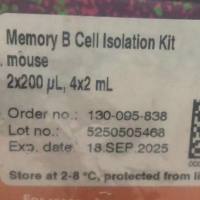Animal Models of Memory Disorders
互联网
564
Disorders of learning and/or memory are commonly associated with Alzheimer’s disease and are often regarded as among the earliest changes that can be detected in individuals developing this disease. However, several other disease states, such as Huntington’s, Parkinson’s, and Korsakoff’s diseases, may also be associated with learning and/or memory disturbance. Changes in learning and memory may also be observed in individuals chronically exposed to such chemicals as ethanol and organophosphate pesticides, or following electroconvulsive treatment for depressive disorders. In fact, there is a wide array of conditions that may lead to a disruption of learning and memory in humans. Because of the complexity of typical human environments, it is not always possible to make clear-cut causeeffect statements, nor is it possible to indicate which brain regions, if any, are responsible for the behavioral deficits. For this reason, animal models of the various human conditions have been developed. In the present chapter, we will survey the approaches that have been used to disrupt memory processes in animals, the tasks used to assess memory processes, and the procedures developed to attempt to overcome the memory disturbance in animal models. We will cover more than just animal models of Alzheimer’s disease, but do not claim to be allinclusive.







